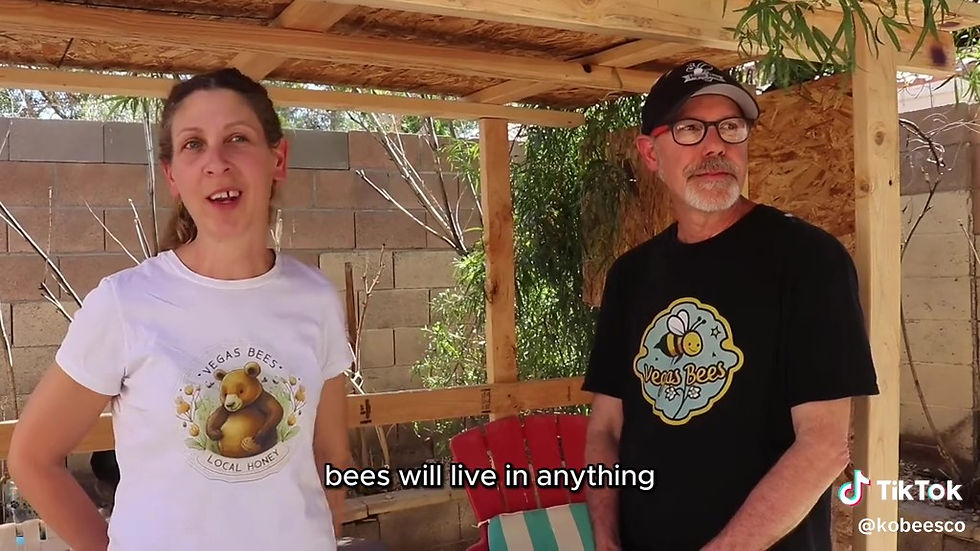
The Sweet Acacia Tree Is A Desert Dilemma in Las Vegas
Our city of Las Vegas isn't exactly known for its lush greenery. The desert climate and arid conditions make it challenging for many plants to thrive.
However, one tree that has found its place in this seemingly inhospitable environment is the Vachellia Farnesiana, also commonly called Sweet Acacia or Mimosa.
With its bright yellow puffball flowers and a sweet, intoxicating fragrance, this flowering tree adds a touch of fragrant beauty to the desert landscape.
It has become a somewhat growing popular choice for parks, medians, and even residential backyards. But is the Sweet Acacia all sunshine and rainbows for Las Vegas? Let's explore the pros and cons of having this tree in the desert metropolis.
Pros of the Sweet Acacia in Las Vegas
Beauty and Fragrance: The star attraction of Sweet Acacia is undoubtedly its flowers. Clusters of fluffy, golden-yellow ball-shaped blooms add a vibrant pop of color and fill the air with a sweet, pleasant aroma reminiscent of honey and perfume.
This can greatly enhance the aesthetics of outdoor spaces and create a more inviting atmosphere, especially in areas that may otherwise feel stark and barren due to the desert climate.
Shade and Climate Control: Las Vegas is no stranger to scorching summers, with temperatures often soaring well above 100°F (38°C).
The Sweet Acacia, with its broad, spreading canopy, provides some welcome shade during the hottest months.
While it can provide some filtered shade, its canopy is not dense or broad enough to create significant shaded areas that would offer substantial relief from the intense Las Vegas sun.
Low Maintenance: Arid environments like Las Vegas demand drought-tolerant and hardy plants. The Sweet Acacia thrives in hot, dry climates and requires minimal watering once established, making it a water-wise choice for landscaping.
Its resilience means less effort and resources are needed for its upkeep, which is a significant advantage in a city that values water conservation.
Wildlife Habitat: Sweet Acacia's presence can contribute to a more diverse and thriving ecosystem in an urban environment like Las Vegas.
The tree's fragrant flowers attract butterflies, hummingbirds, and other pollinators, providing a valuable food source. Additionally, the foliage can provide nesting sites for small birds, creating a haven for urban wildlife.

Cons of the Sweet Acacia in Las Vegas:
Messy Seed Pods: While the Sweet Acacia's flowers are undoubtedly beautiful, the tree also produces long, brown seed pods that fall and create litter.
These pods can be unsightly and require regular cleaning, especially in high-traffic areas such as parks, sidewalks, and parking lots.
The constant cleanup can be a hassle for homeowners and city maintenance crews alike.
Root System: Despite being drought-tolerant, the Sweet Acacia has a deep and expansive root system.
This can be problematic when the tree is planted near sidewalks, foundations, or underground utilities, as the roots can potentially cause damage by lifting or cracking these structures over time.
Proper planning and strategic placement are crucial to avoid costly repairs.
Sweet Acacia's fragrant flowers are not a magnet for honeybees
Honeybee Attraction (or lack thereof): This has mixed pros and cons from our point of view.
One might expect Sweet Acacia's fragrant flowers to be a magnet for honeybees and pollinators for many plants. However, research suggests that honeybee attraction can vary depending on factors like climate and the presence of other flowering plants in the area.
Las Vegas's dry climate and focus on non-native, desert-adapted plants might limit the tree's appeal to honeybees, potentially reducing its value as a regional pollinator plant.
We have repeatedly witnessed that the honeybees do not bother with this tree or its blooms. Yes, this is very surprising, as it is also for us. Its striking beauty is jaw-dropping, but not even seeing one honeybee on the blooms was a real eye opener.
The Verdict: Sweet, but with Considerations
The Sweet Acacia offers undeniable aesthetic and environmental benefits for Las Vegas. Its low maintenance care, drought tolerance, and ability to provide shade make it a practical choice for landscaping in the desert city.
The tree's vibrant flowers and sweet fragrance can transform even the most barren spaces into oases of beauty and tranquility.
However, the potential issues with messy seed pods and root damage require careful planning when planting this tree.
Homeowners and city planners alike must consider appropriate planting locations, such as areas with enough space for the root system to spread without causing damage and low-traffic zones where seed pod litter is less of a concern.
Additionally, while the Sweet Acacia may not be a honeybee magnet, its value in attracting other pollinators and providing habitat for urban wildlife should not be overlooked.

By incorporating a diverse range of native and well-adapted plant species, Las Vegas can create a more balanced and sustainable urban ecosystem.
Ultimately, the Sweet Acacia can be a valuable addition to Las Vegas's landscape, but it's crucial to consider the potential drawbacks and plan accordingly.
With thoughtful planting and maintenance, this fragrant tree can continue to bring a touch of sweet desert beauty to the city without compromising its functionality or the well-being of its residents and infrastructure.
All pictures were taken by Pete and Betsy from Vegas Bees.
Betsy and Pete
Las Vegas, Nevada
About Us: The Authors

We're Betsy and Pete, passionate Las Vegas beekeepers trained by a master in the field. With hundreds of successful bee and bee swarm removals under our belts, we're not just experts; we're enthusiasts committed to the well-being of these incredible pollinators.
We manage dozens of beehives, both natural and honey-bearing at our Joshua Tree Preserve.
Our Commitment to Excellence
Education is an ongoing journey, especially in a dynamic field such as beekeeping. That's why we continually update our knowledge base, collaborate with other experts, and stay up to date with the latest advancements in bee control methods and beekeeping practices.
We also provide top-tier beekeeping supplies, offering everything a beekeeper needs, from beginners to experts.
.png)